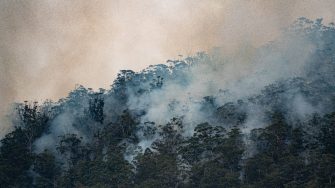
Background
Nitrogen is a fundamental component of DNA, proteins and enzymes, and is essential for life on earth. As the world population continues to grow, nitrogen-based fertilisers will be increasingly relied upon by the agricultural industry to increase crop productivity and sustain global prosperity demands. Overuse of nitrogen fertilisers can lead to adverse effects on nearby ecosystems. Nitrogen compounds (nitrate, ammonia and nitrous oxide) that are lost off-farm are termed indirect emissions. These emissions can occur via leaching to groundwater, surface run-off to river catchments and gaseous losses to the atmosphere.
The problem
- Increased nitrate and ammonia concentrations enhance eutrophication (excessive plant and algal growth) and acidification of waterways, which disrupts the normal functioning of ecosystems.
- Nitrous oxide is a long-lived greenhouse gas that contributes to stratospheric ozone depletion, tropospheric ozone production and radiative forcing.
- Indirect emissions represent a significant economic loss for farmers and the Australian economy.
My research
My PhD focuses on quantifying indirect nitrogen emissions from the Lower Namoi (NSW) and Fitzroy (QLD) catchments in eastern Australia. The project aims to elucidate river, groundwater and atmospheric nitrogen losses and geochemical evolution associated with climatic variability, crop-cycling and surface-groundwater-atmosphere interactions. Hydrogeochemical measurements such as the analysis of major ions, trace elements, stable carbon/water/nitrate stable isotopes and radioactive tracers, allow me to distinguish between different nitrogen sources and production/cycling processes in the river and groundwater systems. I also measure atmospheric concentrations and isotopic source signatures of nitrous oxide using laser spectrometry techniques.
My research is funded by the Cotton Research and Development Corporation (CRDC) and is undertaken in collaboration with the Australian Nuclear Science and Technology Organisation (ANSTO) and supported by the Australian Institute of Nuclear Science and Engineering (AINSE).

